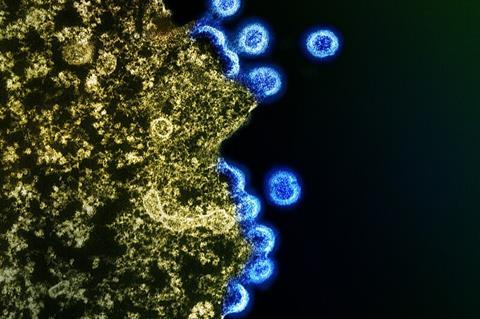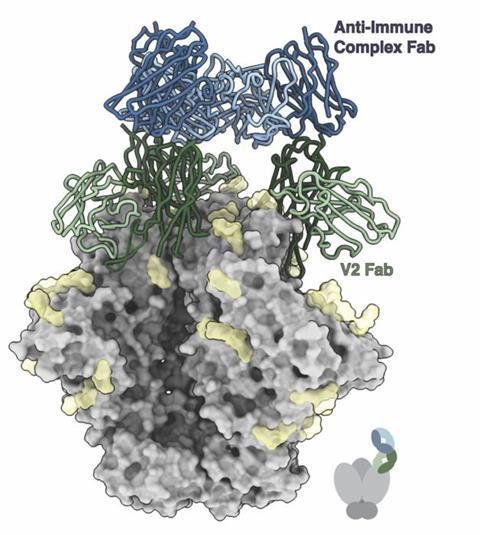But Scripps Research scientists have now discovered that for some HIV vaccines, something else happens: after a few immunizations the immune system begins to produce antibodies against immune complexes already bound to the viral protein alone. They don’t yet know whether this chain reaction, described in Science Immunology, hurts or helps the immune system’s ability to fight HIV, but say that understanding it better could lead to improvements in HIV vaccines. The research was published in the journal on January 17, 2025.
“These anti-immune complex antibodies have not been studied in very much depth, especially in the context of HIV vaccination,” says Andrew Ward, PhD, professor of Integrative Structural and Computational Biology at Scripps Research and senior author of the new paper. “Understanding these responses could lead to smarter vaccine designs and Immunotherapeutics. It’s an exciting step forward in fine-tuning antibody and vaccine-based strategies against HIV and other diseases.”
Surprising discovery
The new observation came about when Ward’s team was using advanced imaging tools to study how antibodies evolve after multiple HIV vaccine doses. A technique invented by the lab, known as Electron Microscopy-Based Polyclonal Epitope Mapping (EMPEM), lets the researchers see exactly where on the HIV virus antibodies bind. When they carried out the experiments on blood from animals that had received multiple doses of an experimental HIV vaccine, they discovered something surprising: some of the antibodies were not binding directly to the HIV viral antigen, but to immune molecules on its surface.
READ MORE: Two-dose schedule could make HIV vaccines more effective
“These antibodies actually make no direct contact with the viral protein,” says Sharidan Brown, a graduate student at Scripps Research and first author of the new paper. “We are the first to structurally characterize this kind of antibody in the context of HIV vaccination.”
Anti-immune complex antibodies
Scientists have previously known that anti-immune complex antibodies could form in some situations. This happens when the immune system recognizes antibodies already bound to viral proteins. An additional immune response occurs, spurring the production of new antibodies, including some that bind to existing immune complexes on the virus’ surface.
In a series of follow-up experiments on HIV-vaccinated animals, Brown, Ward, and their colleagues showed that these kinds of anti-immune complex antibodies often emerge between the second and third administrations of a vaccine.
“We showed that these antibodies exist but what we don’t yet know is how they shape the immune response,” says Brown. “They could be detrimental because they are not directly neutralizing the virus, but they could lead to larger immune complexes which actually spur more activity against the viruses and infected cells in ways that we don’t fully understand.”
Vaccine design strategies
If future experiments show that that the antibodies are, indeed, unwanted, it could guide vaccine design strategies to minimize the immune complex response and improve the ability for vaccines to directly neutralize HIV. It also could lead to changes in HIV vaccine schedules, potentially including a series of different boosting immunizations against the virus rather than multiple doses of the same vaccine.
“Minor changes between each dose could create just enough diversity that you don’t produce antibodies against antibodies,” says Brown.
The research team is planning to continue studying the antibodies, as well as whether similar antibody responses are produced after multiple doses of other vaccines or during natural infection.









No comments yet